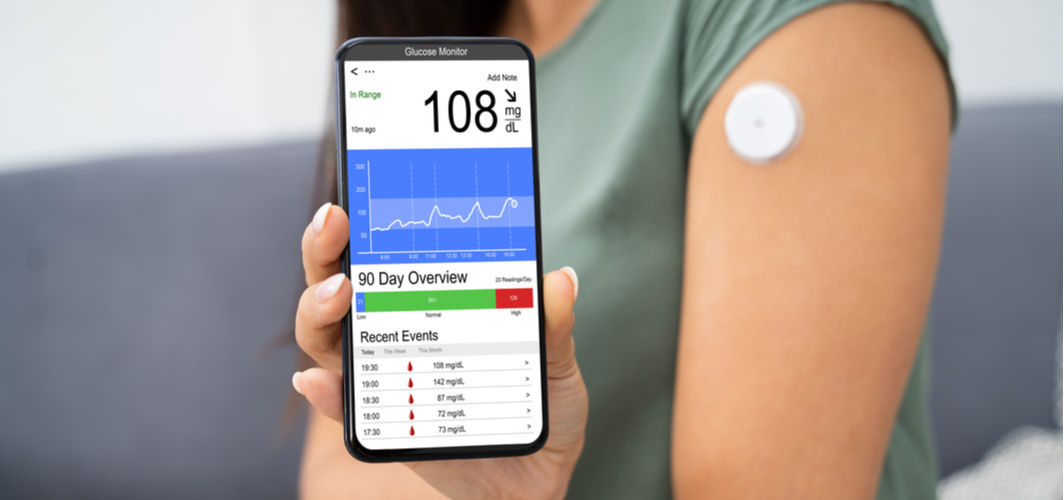Diabetes Management
Understanding the Impact of Standing on Insulin Sensitivity
3 min read
By Apollo 24/7, Published on - 20 September 2021, Updated on - 22 February 2024
Share this article
0
0 like

As we all know, a sedentary lifestyle is one of the major risk factors for type 2 diabetes. Sitting and lying down for extended durations slow down the metabolism of the body. Over time, the impaired metabolism increases the risk of insulin resistance - a condition that makes the cells of the muscles, fat, and liver less responsive to the insulin hormone, which in turn, causes the blood glucose levels to rise.
A proven way to prevent insulin resistance and type 2 diabetes is to engage in daily physical activities like brisk walking, cycling, running, weight training, etc. However, a new study by Finnish researchers has found that mere standing can also improve insulin sensitivity (how well the cells respond to insulin) and reduce the risk of type 2 diabetes. The article explains the study and its findings in detail.
The study
The study titled “Standing is associated with insulin sensitivity in adults with metabolic syndrome” was conducted by Turku PET Centre, a Finnish National Research Institute, and UKK Institute, a private research institute situated in Tampere, Finland. It was published in the Journal of Science and Medicine in Sport on August 14, 2021. The objective of the study was to determine how components of accelerometer-measured sedentary behavior (SB) and physical activity (PA), and fitness are linked with insulin sensitivity in adults with metabolic syndrome.
The study was conducted on 64 sedentary adults (age group - 40-65 years) with metabolic syndrome. As part of the study, the participants were made to wear hip-worn accelerometers for four weeks to measure sedentary behavior (SB), breaks in SB, standing, and physical activity (PA). VO2max (maximum rate of oxygen used by the body during exercise) was measured with maximal cycle ergometry. Insulin sensitivity was calculated using hyperinsulinaemic-euglycaemic clamp (M-value) and fasting blood sampling (HOMA-IR, insulin). Multivariable regression (a supervised machine learning algorithm involving multiple data variables) was used for analyses.
Results
The major findings of the study were:
- Standing is linked with insulin sensitivity in physically inactive sedentary adults who are at an increased risk of developing type 2 diabetes.
- Adiposity (severe or morbid obesity) appears to directly influence the relationship between sedentary behavior, fitness and insulin sensitivity. This signifies the importance of healthy body composition for metabolic health.
- These findings of the study have the potential to offer additional insights that might aid in the development of interventions, policies, and guidelines for the prevention of type 2 diabetes in physically inactive, high-risk populations.
According to the lead researcher of the study, the results suggest that increasing daily standing time could contribute towards the prevention of type 2 diabetes if physical activity recommendations are not met.
Takeaway
Most of us know that a sedentary lifestyle is not good for our health. It is a known risk factor for metabolic diseases such as diabetes. However, till recently, it was assumed that only regular physical activity and a healthy diet could help reduce the risk of type 2 diabetes. Nevertheless, a new study by Finnish researchers seems to have proved that mere standing can also significantly improve insulin sensitivity in inactive sedentary adults at an increased risk of type 2 diabetes. While more research may be required to validate the results, the study offers some interesting insights that should be considered by physicians and the general population alike to prevent the development of type 2 diabetes.
For any questions relating to insulin sensitivity and diabetes management, you can consult an endocrinologist.
You can also try the Apollo 24|7 Diabetes Self-Management Tool to log your sugar values, track patterns, know all about food nutrition and more.
Diabetes Management
Consult Top Diabetologists
View AllLeave Comment
Recommended for you
.jpg?tr=q-80)
Diabetes Management
Jaggery and Diabetes: Safe Substitute for Sugar?
While jaggery may seem like a healthier alternative to refined sugar, it's not recommended for individuals with diabetes. High in sugars and with a high GI, jaggery can still cause spikes in blood glucose levels. Consider alternative sweeteners such as stevia or low-GI fruits to satiate sweet cravings, and remember to maintain a balanced diet. Seek professional advice for personalised dietary guidance and consider enrolling in programmes like the Apollo Super 6 for comprehensive diabetes management.

Diabetes Management
Recognising and Managing Hyperglycaemic Emergencies in Diabetic Patients
Understanding the symptoms of hyperglycaemic emergencies like DKA and HHS could save a life. If you or a loved one have diabetes, it's imperative to seek immediate medical care should these symptoms arise. Early recognition and appropriate management can prevent severe complications. Take charge of your health and explore resources like the Apollo Super 6 program to manage diabetes better.

Diabetes Management
Continuous Glucose Monitoring: How Does it Help?
CGM is a device that helps individuals with diabetes track their glucose levels continuously. A tiny sensor is inserted under the skin to measure glucose in the interstitial fluid. It helps individuals monitor glucose levels throughout the day and night, thereby allowing them to improve their HbA1c levels, reduce hypoglycemia events, and assess the impact of diet and exercise on glucose levels.
Subscribe
Sign up for our free Health Library Daily Newsletter
Get doctor-approved health tips, news, and more.
Visual Stories

8 Fruits That are Incredibly Healthy for Diabetes
Tap to continue exploring
Recommended for you
.jpg?tr=q-80)
Diabetes Management
Jaggery and Diabetes: Safe Substitute for Sugar?
While jaggery may seem like a healthier alternative to refined sugar, it's not recommended for individuals with diabetes. High in sugars and with a high GI, jaggery can still cause spikes in blood glucose levels. Consider alternative sweeteners such as stevia or low-GI fruits to satiate sweet cravings, and remember to maintain a balanced diet. Seek professional advice for personalised dietary guidance and consider enrolling in programmes like the Apollo Super 6 for comprehensive diabetes management.

Diabetes Management
Recognising and Managing Hyperglycaemic Emergencies in Diabetic Patients
Understanding the symptoms of hyperglycaemic emergencies like DKA and HHS could save a life. If you or a loved one have diabetes, it's imperative to seek immediate medical care should these symptoms arise. Early recognition and appropriate management can prevent severe complications. Take charge of your health and explore resources like the Apollo Super 6 program to manage diabetes better.

Diabetes Management
Continuous Glucose Monitoring: How Does it Help?
CGM is a device that helps individuals with diabetes track their glucose levels continuously. A tiny sensor is inserted under the skin to measure glucose in the interstitial fluid. It helps individuals monitor glucose levels throughout the day and night, thereby allowing them to improve their HbA1c levels, reduce hypoglycemia events, and assess the impact of diet and exercise on glucose levels.